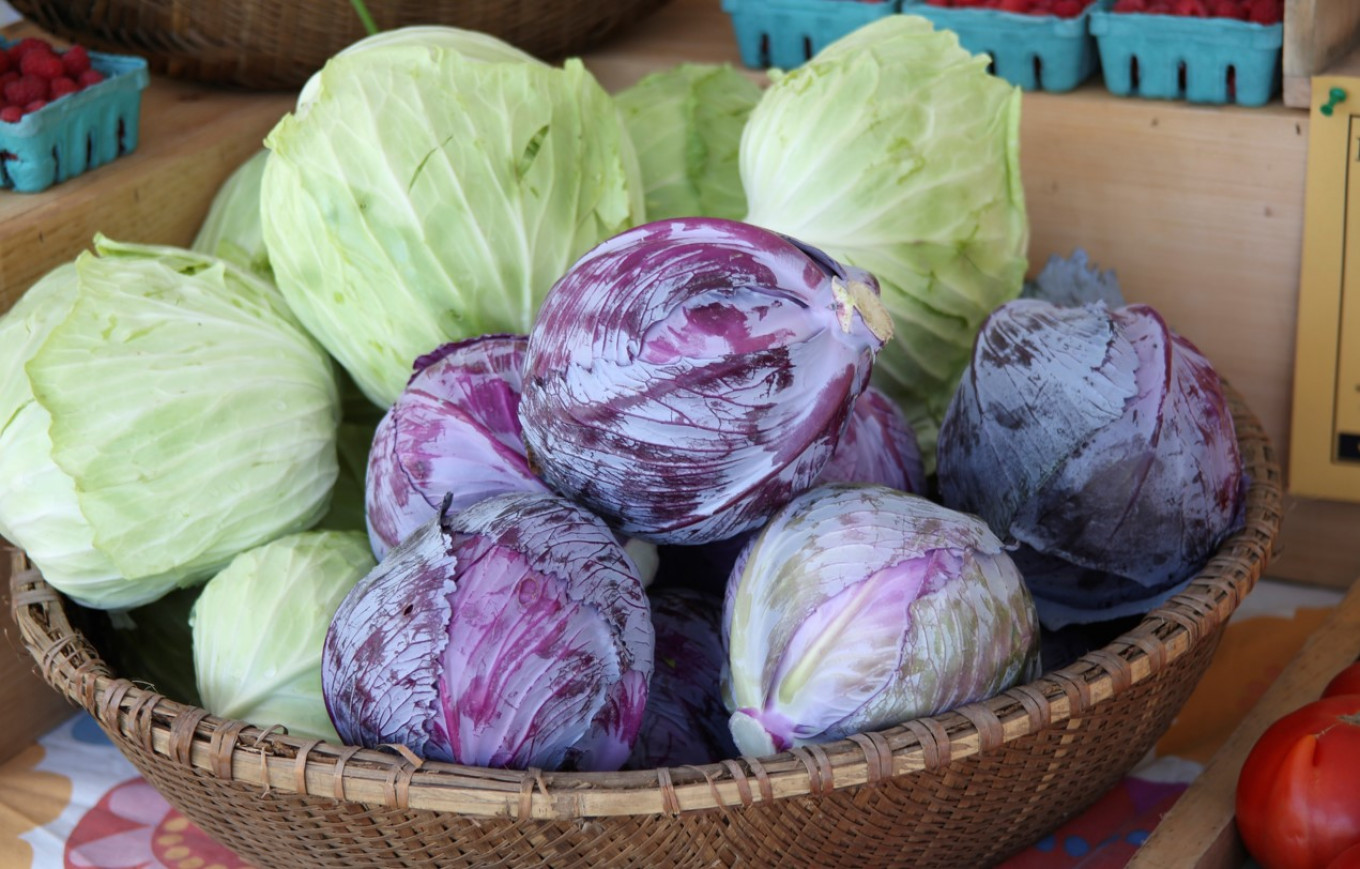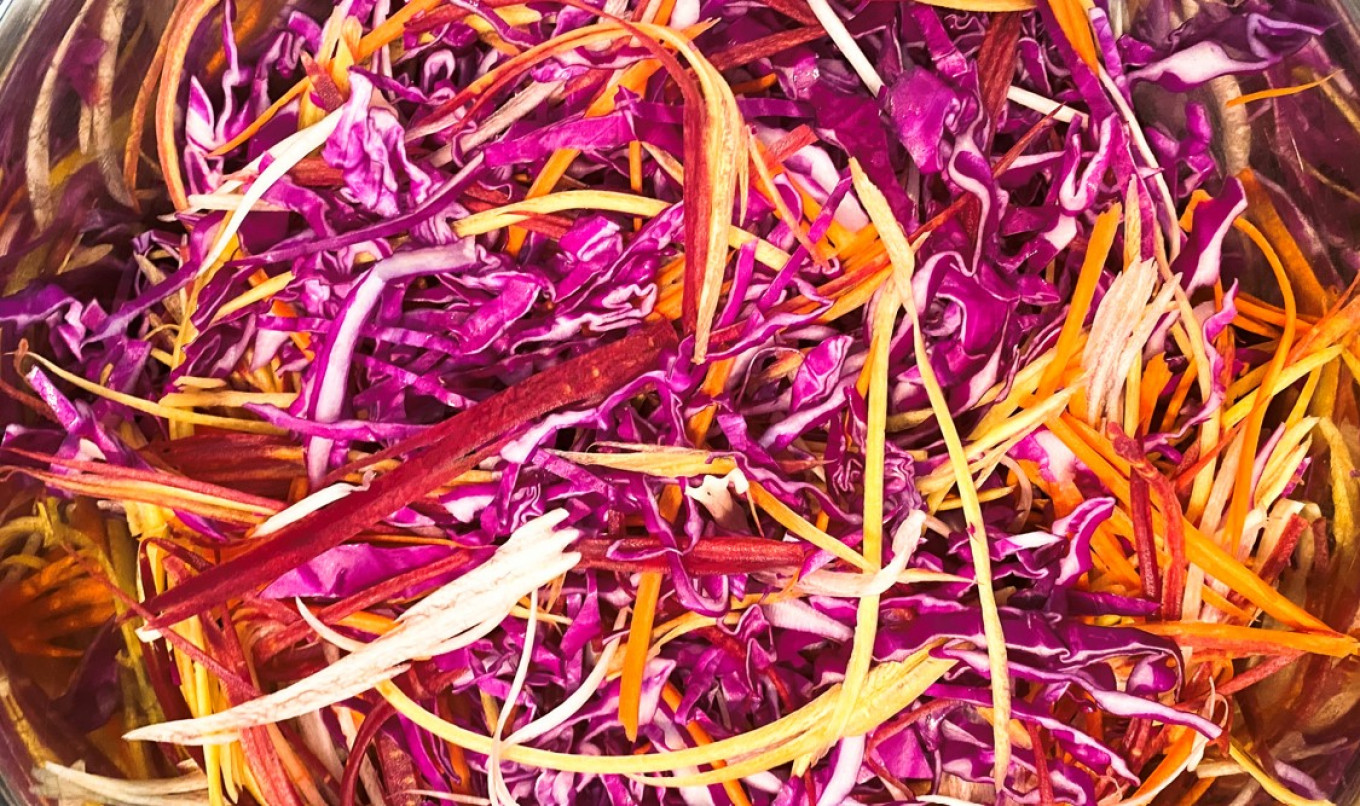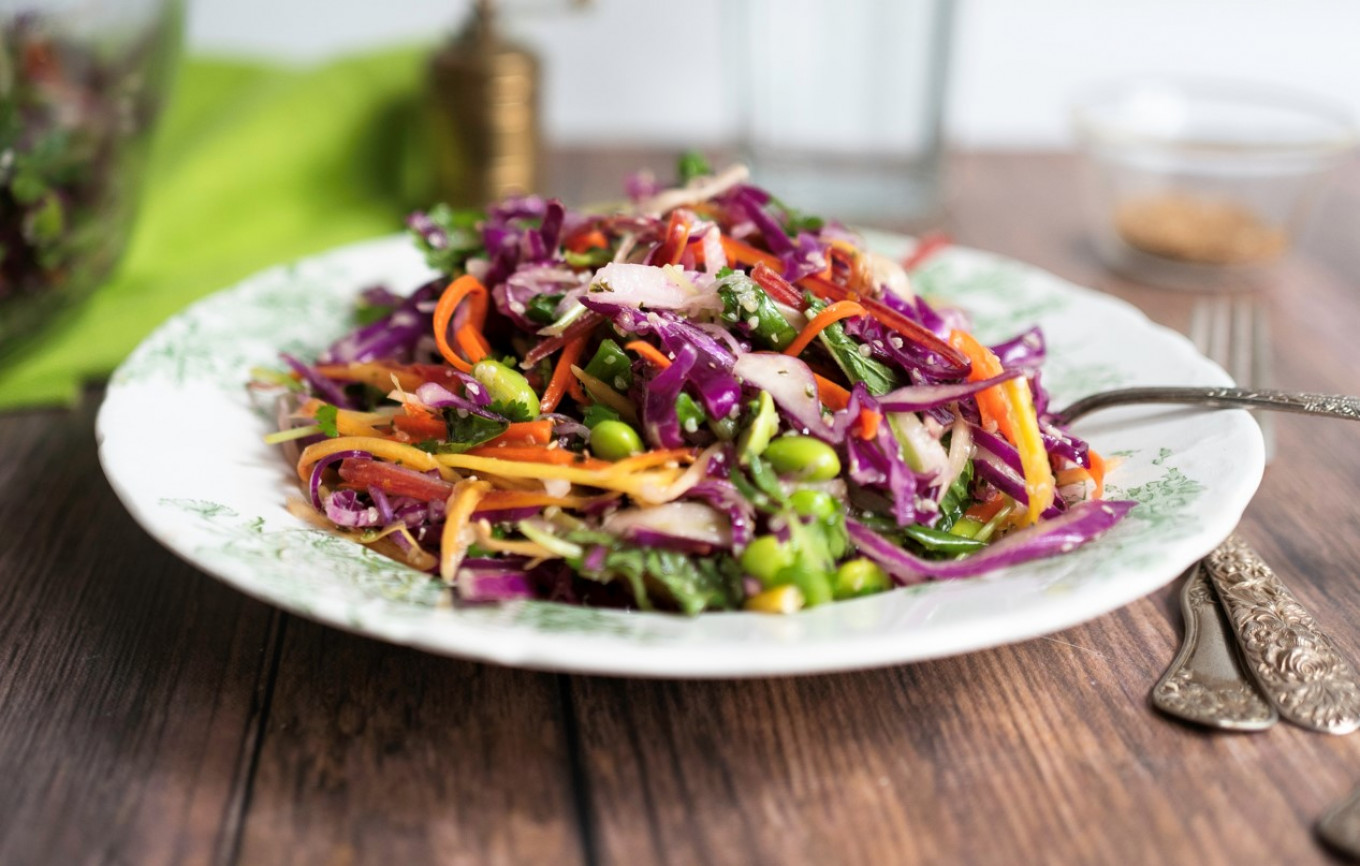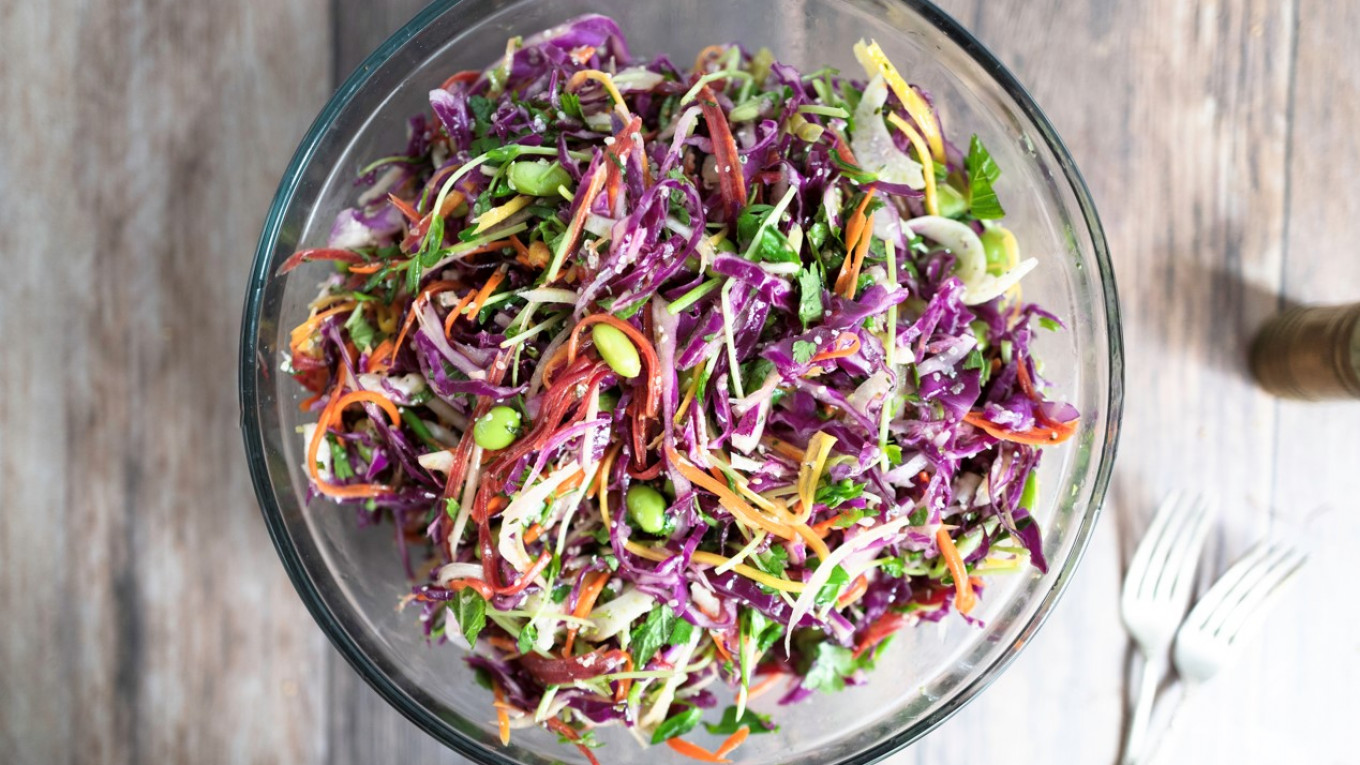Cabbage played a very peripheral role in my culinary life before I moved to Russia. I can’t recall ever eating it in any form except coleslaw at summer picnics, and occasionally as the sidekick to corned beef. Arriving in Moscow in 1993, cabbage was suddenly everywhere: sold off the back of dirt-encrusted pickup trucks on every street corner; piled high at market stalls; shredded, and fermented in large glass jars; bobbing in broth slick with oil; or wrapped around stuffing and nestled in tomato sauce. Back then, cabbage forced you to sit up and pay attention: together with beets and carrots, it was one of the few ingredients you could be sure of finding on a consistent basis. And so I learned to wield a lethal cabbage shredder and got creative about working this nutrient dense but bland-tasting member of the brassica family into my regular menu line-up.
One salient fact became apparent early on: red cabbage (harder to find and more expensive in Moscow) was infinitely more appealing than its green cousin. Red cabbage is more interesting in terms of taste, with a slightly peppery bite to it. Red cabbage is definitely more aesthetically interesting; in fact, there is an entire Instagram account dedicated to the patterns of cleaved red cabbages, which present like exquisite Asian porcelain. Red cabbage also takes gold in both cooked or fermented iterations: I am counting the seconds until a crock of fermented red cabbage and beets I put up two weeks ago is ready to enjoy. Red cabbage effortlessly spans all four seasons: braised with cranberries in December and shaved into an intriguing slaw at a July barbecue. This is also true of green cabbage, I suppose, but I don’t get nearly as excited about the green versions of the these as I do the red.

Picking up a red cabbage at the market marks beginning of an exciting creative culinary adventure. Will I caramelize it into filling for vareniki, or shave it into a crunchy addition to my morning buckwheat bowl? Will I salt it, ferment it, then add it to a pot of borshch? This particular week, I’m riffing on a Soviet-era dish called vitamin salad, which during those leaner years featured only green cabbage, carrots, sugar, oil, and vinegar. At the tail end of winter, this salad was certainly welcome with bracingly astringent flavors and the satisfyingly crunchy texture of the raw ingredients. The triumph of its simplicity made it the perfect foil for anything and everything on the zakuska table: from the oily sausage to black bread, and of course the open bottle of vodka.
At the tail end of this winter, I am feeling in need of something bright and cheerful. A jazzed-up version of vitamin salad seems like just the thing to banish the grey clouds and inject a bit of healthy optimism into the mix. It also offers the perfect opportunity to cull a few items from the vegetable crisper.
The simplicity of vitamin salad lends itself to almost any adaptation that takes your fancy. In the recipe below, I’ve paired red cabbage with thinly shaved rainbow carrots, fennel, and a watermelon radish, plus a quartet of fresh herbs: chives, mint, dill, and basil. You might inject a sweet and tart note with Granny Smith apples, the acidic note of a kohlrabi, or a cup of something fermented. You can also bulk it up by adding other vegetables or grains: I like to throw in edamame for contrast, and finish with a sprinkling of some sort of seed — the recipe below uses hemp hearts, but chia, sesame, or flax seeds would all work equally well.
This version of vitamin salad can morph into slaw with the addition of ⅔-cup (155 ml) of a mixture of sour cream and mayonnaise and about ½-cup (120 ml) of poppy seeds. I often add two or three cups of cooked quinoa to vitamin salad, which makes it a meal, as does a topping of grilled chicken or fish. However you choose to make it, or serve it, vitamin salad is the perfect bright and cheerful antidote to the grey of mud season.

Red Cabbage Vitamin Salad
Ingredients
Salad components
- 1 small head of red cabbage, shredded finely on a mandoline
- 1-½ tsp salt
- 4 large carrots, peeled and shredded or cut into fine matchsticks
- 1 bulb fennel, stalk removed, sliced finely on a mandoline
- 1 watermelon Daikon radish, peeled and sliced finely on a mandoline
- 1 bunch scallions cut thinly on a long diagonal
- 1-½ cups (350 ml) pea shoots or bean sprouts
Dressing
- ½-cup (120 ml) olive oil
- 2 Tbsp red wine vinegar
- Zest and juice of one lemon
- 1 Tbsp freshly grated ginger
- 2 Tbsp runny honey
- 1 tsp salt
Garnish
- ¾-cup (180 ml) chopped dill, fennel fronds, basil, chives, and mint
- 1 cup (235 ml) cooked edamame
Instructions
- Toss the shredded cabbage with the salt, then gently massage the cabbage with clean hands until the cabbage leaches liquid. Don’t overdo this step — you are not making kraut. Set aside for 5-7 minutes.
- Whisk together the dressing ingredients until the honey has dissolved.
- Toss the dressing with the cabbage and remaining salad components until well combined and the dressing has coated all the ingredients. Cover and chill for 10-15 minutes. Just before serving, fold in the chopped herbs and edamame.

A Message from The Moscow Times:
Dear readers,
We are facing unprecedented challenges. Russia's Prosecutor General's Office has designated The Moscow Times as an "undesirable" organization, criminalizing our work and putting our staff at risk of prosecution. This follows our earlier unjust labeling as a "foreign agent."
These actions are direct attempts to silence independent journalism in Russia. The authorities claim our work "discredits the decisions of the Russian leadership." We see things differently: we strive to provide accurate, unbiased reporting on Russia.
We, the journalists of The Moscow Times, refuse to be silenced. But to continue our work, we need your help.
Your support, no matter how small, makes a world of difference. If you can, please support us monthly starting from just $2. It's quick to set up, and every contribution makes a significant impact.
By supporting The Moscow Times, you're defending open, independent journalism in the face of repression. Thank you for standing with us.
Remind me later.







